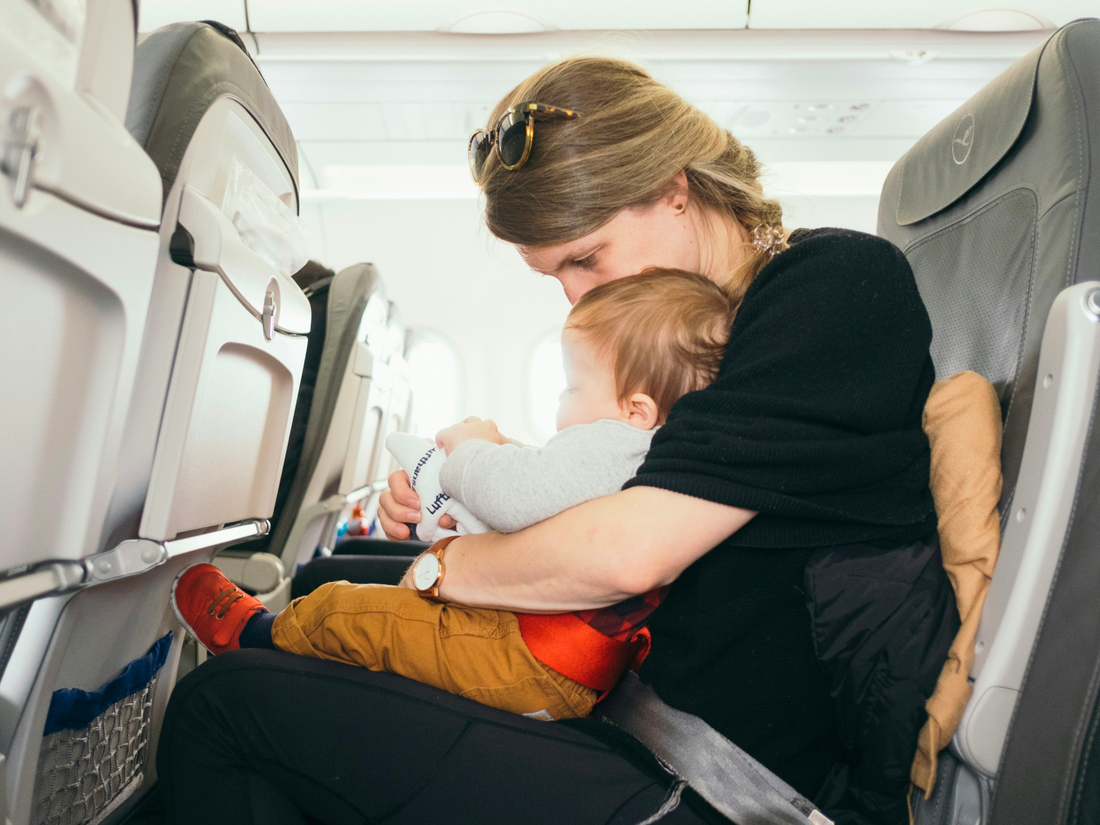✈️ Yes, You Can Travel With a Baby or Toddler: Sleep Series
Part 3: Beating Jet Lag with Babies and Toddlers (Without Losing Your Mind)
If you’ve ever Googled “how to deal with baby jet lag” at 3 a.m. in a new country… this one’s for you.
You’ve braved the flight. You’ve landed. But now your baby is wide awake at 2 a.m., ready to party, and you're wondering if travel was a mistake. Here’s the truth: jet lag happens — and it’s especially tough on little ones.
But with a few smart strategies (and some grace), you can help your baby or toddler adjust to a new time zone with minimal disruption. And yes — you’ll sleep again.
🌍 What Jet Lag Actually Is (and Why It Hits Babies Hard)
Jet lag is what happens when your body clock — aka your circadian rhythm — is out of sync with the local time. While adults can power through with coffee and melatonin, babies and toddlers thrive on consistency. Sudden time changes = cranky naps, midnight wakeups, and confused parents.
💡 How long does baby jet lag last?
Expect 3–5 days for full adjustment, depending on how many time zones you’ve crossed. Babies and toddlers typically adjust by 1 hour per day.
🛫 Pre-Travel Prep: Set the Stage Before You Fly
Getting ahead of jet lag can start before you even board the plane:
- 🕒 Gradually shift their schedule 3–5 days before departure (15–30 min per day toward the new time zone)
- 🛌 Prioritize good sleep the night before your flight — overtired kids struggle more with transitions
- 🍽️ Adjust meal and nap times to ease the body into change
- 🛫 If possible, book flights that align with your child’s sleep patterns — red-eyes work well for long hauls
✈️ In Transit: What to Do on the Plane
On international flights, the trick is to wait until after the meal service to encourage sleep.
Once trays are cleared and the cabin lights dim, you’ll usually get an uninterrupted window with no announcements or disruptions.
🛏️ That’s your sleep cue.
- Change baby into pajamas
- Offer a bottle or snack
- Read a book or do a quick cuddle routine
- Dim your screens and keep stimulation low
Even if they don’t fall asleep right away, you’re signaling it’s time to wind down.
🧳 We pack sleep gear in the Hideaway Duffel and keep essentials easily accessible in the Getaway Bag. No rummaging through carry-ons at 35,000 feet.
💼 Planning for a long-haul journey?
👉 International Flights with Your Toddler: The Ultimate Packing Guide
🏡 Day One: Reset the Body Clock
You’ve landed. Now what?
The first day is your reset button. From the moment you arrive, start operating on local time — even if it feels weird.
- ☀️ Get outside into natural light right away (this is the #1 circadian cue)
- ⏰ Keep naps short (no longer than 1–1.5 hrs)
- 🍽️ Eat meals based on local time
- 🛌 Aim for bedtime at the local hour, even if it feels early or late
Consistency is your best friend. Expect a bit of resistance — but stay the course.
🌙 The First Few Nights: What to Expect (and How to Survive)
The hardest part of baby jet lag? Nights 1–2.
If your baby wakes at 2 a.m. wide-eyed and ready to play:
- Keep lights dim and stimulation low
- Offer quiet comfort — a bottle, snuggles, gentle music
- Avoid introducing new sleep habits you’ll regret later (like turning on TV or making it “fun”)
- Treat it like a “false start” and repeat your bedtime routine
⏳ Adjustment is not instant. But if you stay consistent, things usually smooth out within a few days.
🧠 Bonus Tips: Sleep Tools That Actually Help
✅ White noise: blocks out new sounds
✅ Blackout curtains or travel shades: keep mornings from starting at 4 a.m.
✅ Familiar bedtime routine: even in a new place, try to replicate home
✅ Sleep sack, lovey, bedtime book: bring comfort cues from home
We keep all these packed together in the Hideaway Duffel so our kids’ sleep setup stays consistent—even when the time zone isn’t.
📦 Pro tip: separate bedtime gear into its own cube or compartment. When you’re exhausted, being able to find the lovey or sound machine quickly is everything.
📝 Baby Jet Lag FAQs
Q: How long does it take for babies to adjust to jet lag?
Usually 3–5 days, depending on distance and age. Toddlers may resist more at first but adjust quicker once routines are reestablished.
Q: Should I wake my baby in the morning while jet lagged?
Yes — to start resetting their clock, wake them around 7–8 a.m. local time.
Q: Can I give melatonin?
Always consult your pediatrician. In general, melatonin is not recommended for children under 3.
Q: What if nothing is working?
Go outside, get sunlight, stick to routine, and be patient. Jet lag is temporary. Keep comfort and consistency at the core.
💬 Final Thought: Jet Lag Is a Phase — Not a Reason to Stay Home
Jet lag might feel daunting, especially if this is your first time traveling internationally with your child. But it passes — and the memories you make are so worth it.
One rough night doesn’t undo the joy of discovering a new place together.
Your baby or toddler is more adaptable than you think. So are you.
🧳 Read the Full Sleep Series
- ✅ Part 1: Will My Baby Sleep While Traveling?
- ✅ Part 2: Sleep Setup in a Hotel or Airbnb
- ✅ Part 3: Beating Baby Jet Lag ← you’re here




